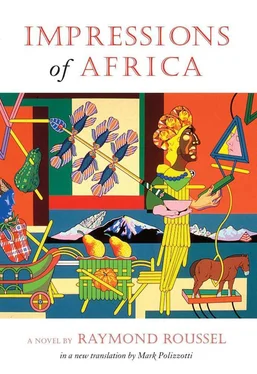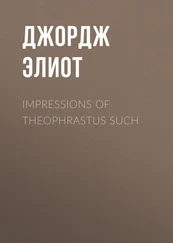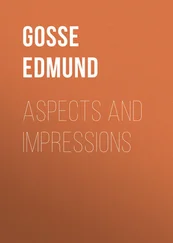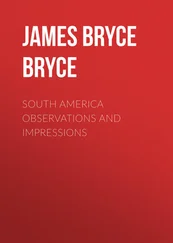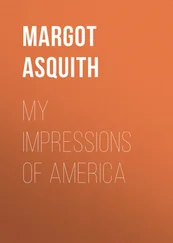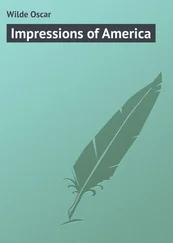The penultimate tableau, titled “The Morgue,” showed a frontal view of a woman’s corpse lying on a slab behind a pane of glass; plainly visible in the background, a silver chain sagged beneath the weight of a precious watch.
Finally, “The Fatal Blow” ended the series with a nocturnal landscape; in the half-light, one made out the tanned Zouave slapping Lieutenant Lécurou, while in the distance, standing out against a thicket of ship’s masts, a placard lit by a bright lantern bore the three words, “Port of Bougie.”
At my back, a dark rectangular structure of meager dimensions stood as a complement to the altar, a light grill with narrow bars of black-painted wood forming its façade. Four native detainees, two men and two women, paced quietly inside this exiguous prison. Above the grill, red letters spelled the word “Jail.”
Next to me, the sizable group of passengers from the Lynceus stood waiting for the promised parade to begin.
SOON THE SHUFFLE of footsteps could be heard. All eyes turned to the left, and from the southwest corner of the esplanade we saw a strange and solemn cortege advancing.
At its head, the emperor’s thirty-six sons, sorted by height into six rows, composed a dark phalanx ranging in age from three to fifteen. Fogar, the eldest, bringing up the rear with the taller boys, carried in his arms a huge wooden cube, transformed into a gaming die by a heavy coat of white paint dotted with circular black pips. At a sign from Rao, the native in charge of the parade’s progress, the troop of children slowly moved forward along the edge of the esplanade occupied by the Stock Exchange.
After them, in a seductive single file, came the sovereign’s ten wives, graceful Ponukeleans endowed with beauty and charm.
Finally, Emperor Talou VII himself appeared, curiously attired as a torch singer, his long blue gown with its plunging neckline dragging behind him in a long train, on which the number 472 stood out in black figures. His dark face, imbued with savage energy, was not lacking in character, and formed a sharp contrast with his luxuriant and scrupulously waved blond wig. With his hand he guided his daughter Sirdah, a slim child of eighteen, whose crossed eyes were veiled by opaque leucoma, and whose black forehead bore a red birthmark shaped like a minuscule corset from which yellow lines radiated.
Behind them marched the Ponukelean troops, superb ebony-hued warriors heavily armed beneath their ornamental finery of feathers and amulets.
The cortege slowly followed the same path as the group of children.
Passing in front of the Zouave’s sepulcher, Sirdah, who had likely been counting her steps, suddenly veered off toward the tombstone, on which her lips gently placed a long kiss full of unadulterated tenderness. This pious duty fulfilled, the blind girl affectionately took her father’s hand again.
As they reached the far end of the esplanade, the emperor’s sons, under Rao’s direction, turned right and skirted the north side of the vast quadrilateral; reaching the opposite corner, they turned a second time and headed back toward us, while the parade, still replenished at its source by numerous troops, precisely followed in their tracks.
Finally, the last of the black warriors having entered just as the advance guard of children touched the southernmost limit, Rao ordered the approach to the altar cleared, and all the newcomers crowded in orderly fashion along the two lateral areas, faces turned toward the center of the square.
On all sides, a black horde, comprising the population of Ejur, had assembled behind the sycamores to witness this tantalizing spectacle for themselves.
Still grouped into six rows, the emperor’s sons reached the middle of the esplanade and halted opposite the altar.
Rao took the monstrous die from Fogar’s arms, juggling it several times and then tossing it in the air with all his might. The twenty-inch cube spun as it rose, a black-speckled white mass; then, describing a very tight arc, it fell to earth and rolled on the ground before coming to rest. At a glance, Rao read the number two on the upper face and, walking toward the docile phalanx, pointed to the second row, which alone remained in place. The rest of the group, picking up the die, ran off to join the throng of warriors.
With majestic cadence, Talou marched to join the chosen ones whom fate had designated as his pages. Then, amid a profound silence, the emperor approached the altar, escorted by the six privileged children who each kept a firm hold on the train of his gown.
After climbing the few steps leading to the sparsely laid table, Talou bid Rao approach; the latter held in both hands a heavy sacramental cloak, presenting it inside out. Stooping, the emperor fit his head and arms into three openings cut in the middle of the garment; its large folds, as they fell, enveloped him to his feet.
Thus attired, the monarch turned proudly toward the assembly as if to offer his new costume to everyone’s gaze.
The rich, silken fabric depicted a large map of Africa, with indications of the principal lakes, rivers, and mountains.
The pale yellow of landmasses sliced through the variegated blue of the sea, which stretched on all sides as far as required by the garment’s overall shape.
Fine silver streaks covered the surface of the oceans with curved, harmonious zigzags, schematically representating the endless undulation of waves.
Only the southern half of the continent was visible between the emperor’s neck and ankles.
On the western side, a black dot, accompanied by the name “Ejur,” was situated near the mouth of a river whose source emerged from a mountain range a fair distance to the east.
Stretching from both banks of the wide waterway, a huge red area depicted the realm of the all-powerful Talou.
To flatter the emperor, the garment’s designer had pushed back the limits — ill-defined as they were — of the imposing territory under Talou’s scepter; dazzling carmine, heavily distributed to the north and east, stretched south all the way to land’s end, across which the words “Cape of Good Hope” paraded in fat black letters.
After a while, Talou turned once more toward the altar; on his back, the other half of his robe showed the northern part of Africa, hanging upside-down in the same watery frame.
The solemn moment was upon us.
In a powerful voice, the monarch began intoning the native text traced in hieroglyphs on the sheet of parchment in the middle of the narrow table.
It was a kind of bull, through which Talou, already Emperor of Ponukele, now crowned himself King of Drelchkaff by virtue of his religious authority.
His proclamation over, the sovereign seized the cruet standing in for the Holy Ampulla and, turning his profile to us, poured oil over the tips of his fingers, with which he then anointed his brow.
He immediately replaced the flask and, descending the altar steps, strode briskly toward the litter of leaves shaded by the rubber tree. There, his foot resting on Yaour’s corpse, he heaved a long sigh of joy, triumphantly raising his head as if to humiliate the late king’s remains before one and all.
Returning after that prideful act, he handed the heavy cloak back to Rao, who promptly took it away.
Escorted by his six sons, who again carried his train, he walked slowly in our direction, then turned toward the Incomparables’ theater, standing at the head of the crowd.
At that point, the emperor’s wives advanced to the center of the esplanade. Rao joined them there, bearing a heavy tureen that he placed on the ground in their midst.
The ten young women fell upon the receptacle, which was full of a thick blackish porridge that they devoured greedily, lifting it to their lips with their hands.
Читать дальше
